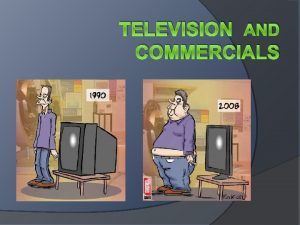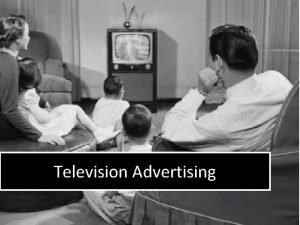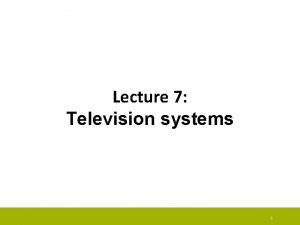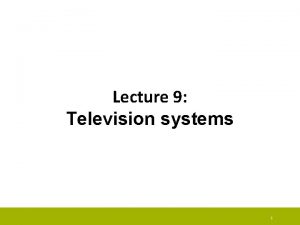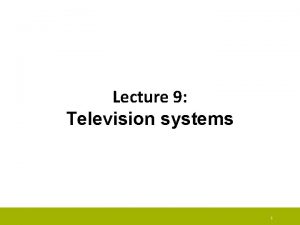Television Advertising and Idealized Image of Good Life


















- Slides: 18

Television Advertising and Idealized Image of “Good Life” among Adolescents in Rural China Xiao Cai and Kara Chan Hong Kong Baptist University ICORIA June 29 -30, 2007

Introduction Advertising presents unrealistic or idealized pictures of people and their lives. When audience engaged in social comparison with these images, they would feel unhappy, anxious and dissatisfied.

Introduction The influence of advertising is open to question when it comes to rural adolescents. There are 350 million young people under 18 with approximately threefifths rural in China.

Research Questions Does the television advertising viewing have impact on upward social comparison with idealized images of “good life” portrayed in television advertising? Does this comparison lead to a lower evaluation of current living standards?

Literature Review According to social comparison theory, individuals have a need to evaluate themselves and they do so via comparison with others. The theory was expanded that the comparison also occur in the evaluation of circumstances.

Literature Review There were two directions for social comparison --- upward and downward. Numerous studies have demonstrated the negative effects of idealized male or female body images in mass media, especially in advertising.

Research Hypotheses H 1: Viewing of television ads is positively related to social comparison with idealized images of “good life” portrayed in television advertising. H 2: Social comparison with the idealized images of “good life” is negatively related to evaluation of standards of living.

Method A survey was conducted in Henan province in October 2006. The respondents were 401 rural adolescents attending two secondary schools. The structured questionnaire was selfadministered.

Sample Profile 216 males, 185 females Age ranged from 12 to 17 years with a mean age of 14. 6 years 11. 3% single child

Sample Profile 72. 4% family income from agriculture 1. 8 television viewing hours per day More frequently watched local channels than national channels

Measures Television advertising viewing 7 items Social comparison with idealized images of “good life” 7 items Evaluation of the standard of living 7 items

Findings The mean of television advertising viewing was 2. 4 (SD=0. 6). The mean of social comparison with idealized image of “good life” was 2. 4 (SD=0. 8). The mean of evaluation of the standard of living was 2. 8 (SD=0. 6).

Findings

Findings

Findings H 1 was supported (r=0. 47, p<0. 01 ) H 2 was rejected (r=-0. 03, p>0. 05)

Discussion Television advertising triggers upward social comparison. Motivations of viewing television advertising Social comparison with idealized images and evaluation of the standard of living

Limitations Convenience sample Focus on television advertising Only two effects caused by television advertising

THANKS! Q&A
 Social comparison and the idealized images of advertising
Social comparison and the idealized images of advertising Differentiate actual self and ideal self.
Differentiate actual self and ideal self. It is the alignment of the ideal and real self.
It is the alignment of the ideal and real self. History
History Global advertising and international advertising
Global advertising and international advertising Good words good thoughts good deeds
Good words good thoughts good deeds Hello good afternoon
Hello good afternoon Good evening students
Good evening students You are good you are good when theres nothing good in me
You are good you are good when theres nothing good in me Buenas tardes good afternoon
Buenas tardes good afternoon Idealized animal cell and plant cell
Idealized animal cell and plant cell Less religious and less idealized than greek art
Less religious and less idealized than greek art Gap
Gap Transformational leader steve jobs
Transformational leader steve jobs Idealized remote sensing system
Idealized remote sensing system Idealized influence
Idealized influence Idealized noble characters
Idealized noble characters Body image advertising
Body image advertising Image advertising
Image advertising



